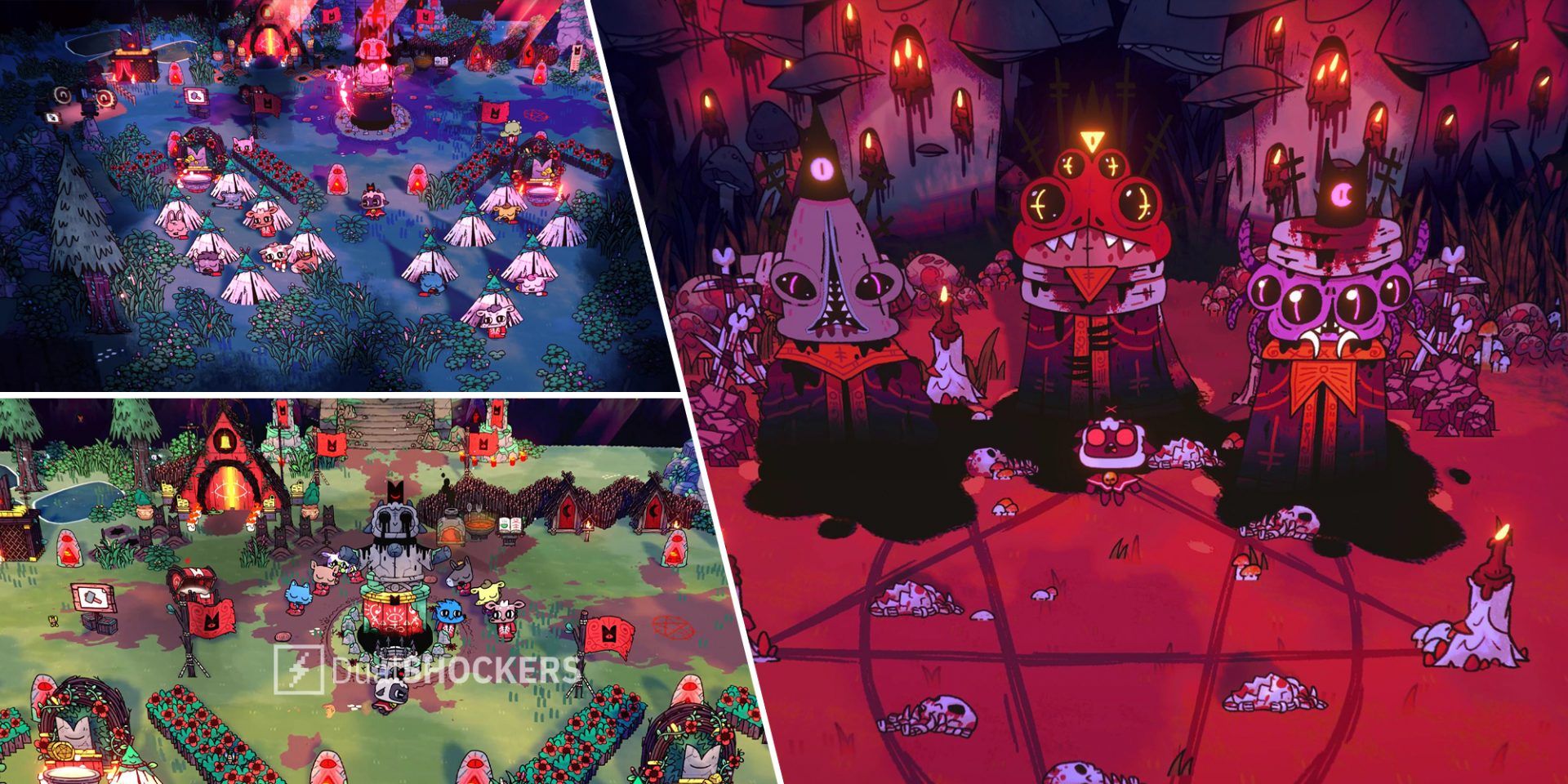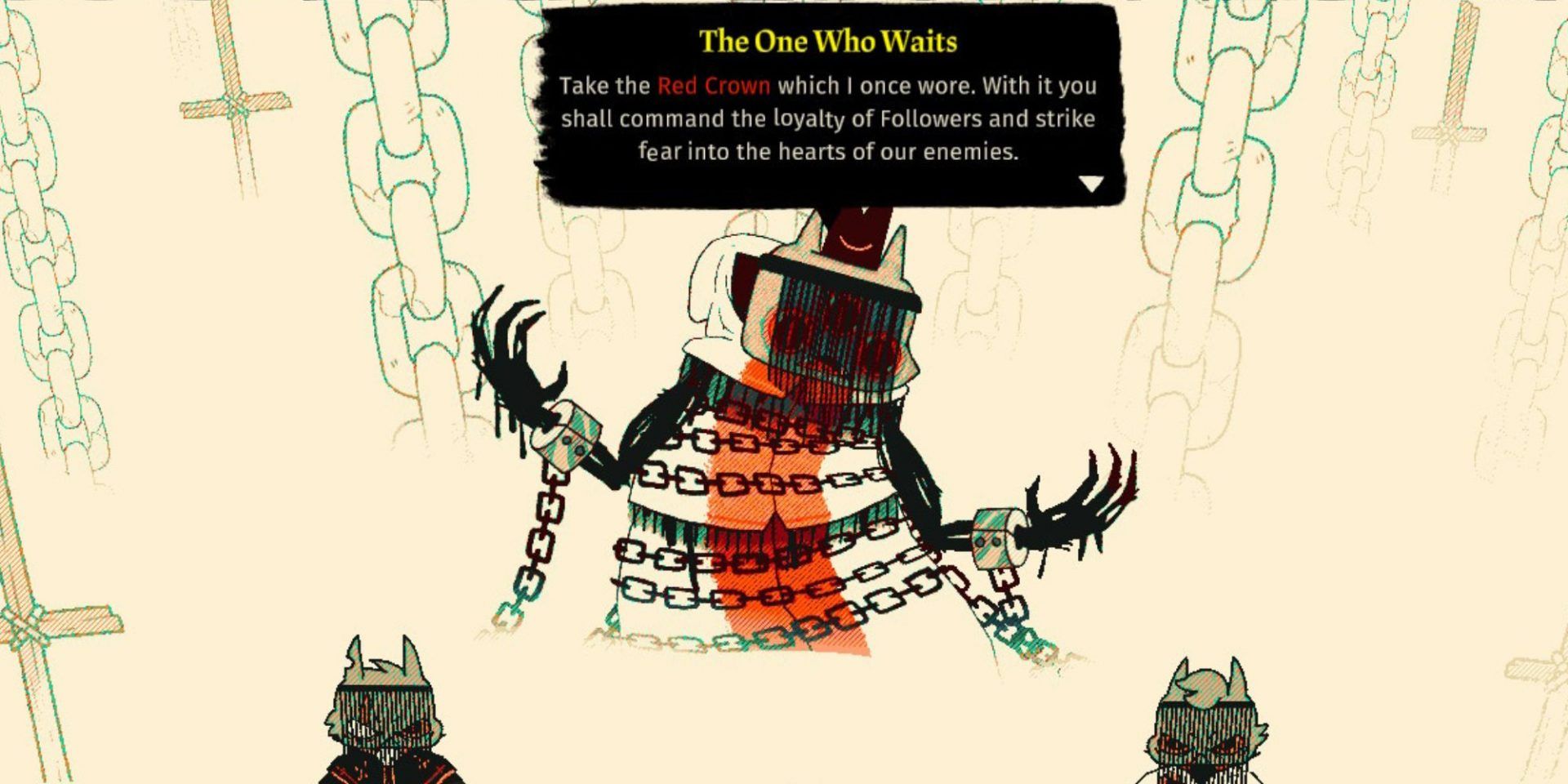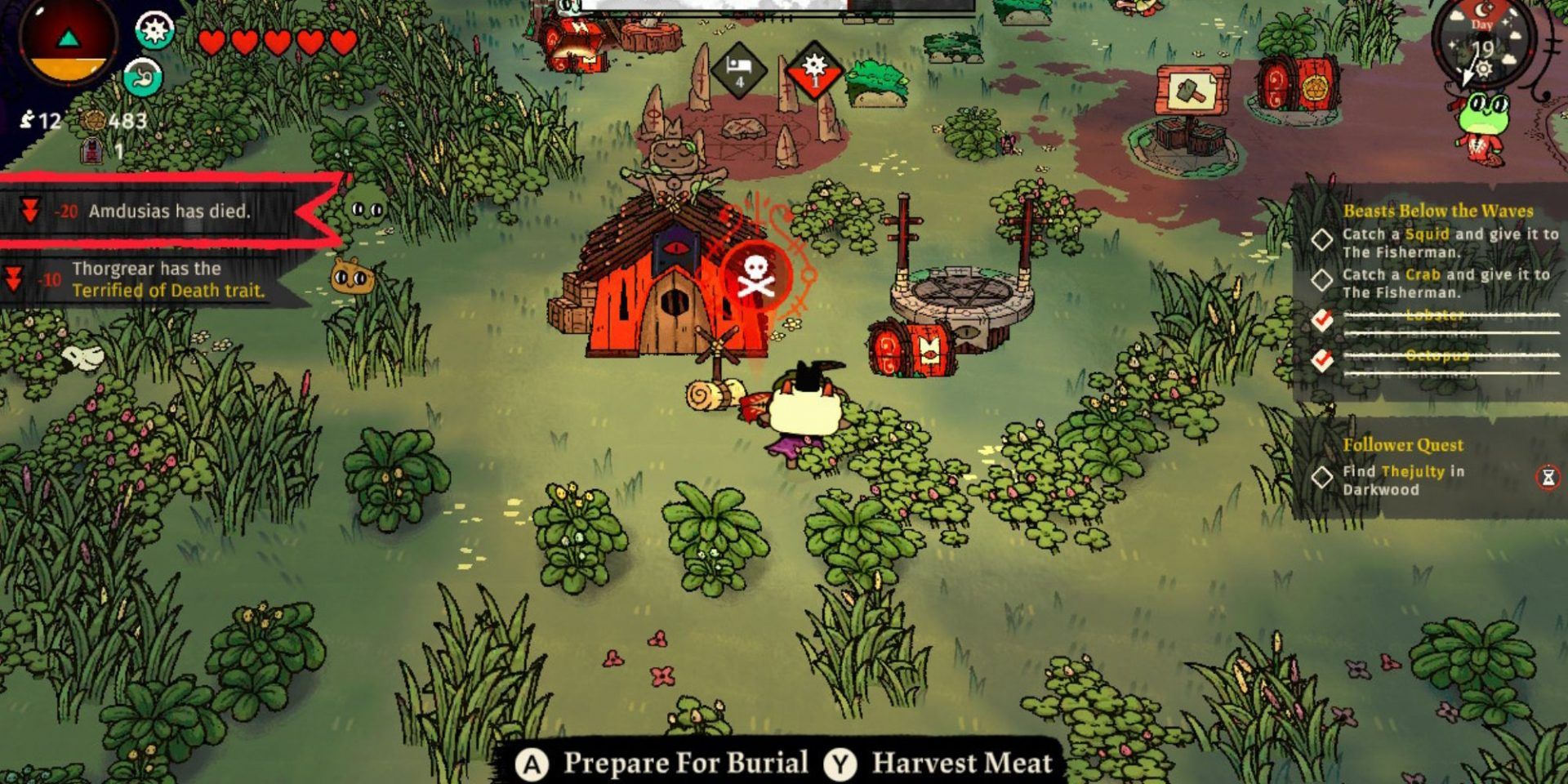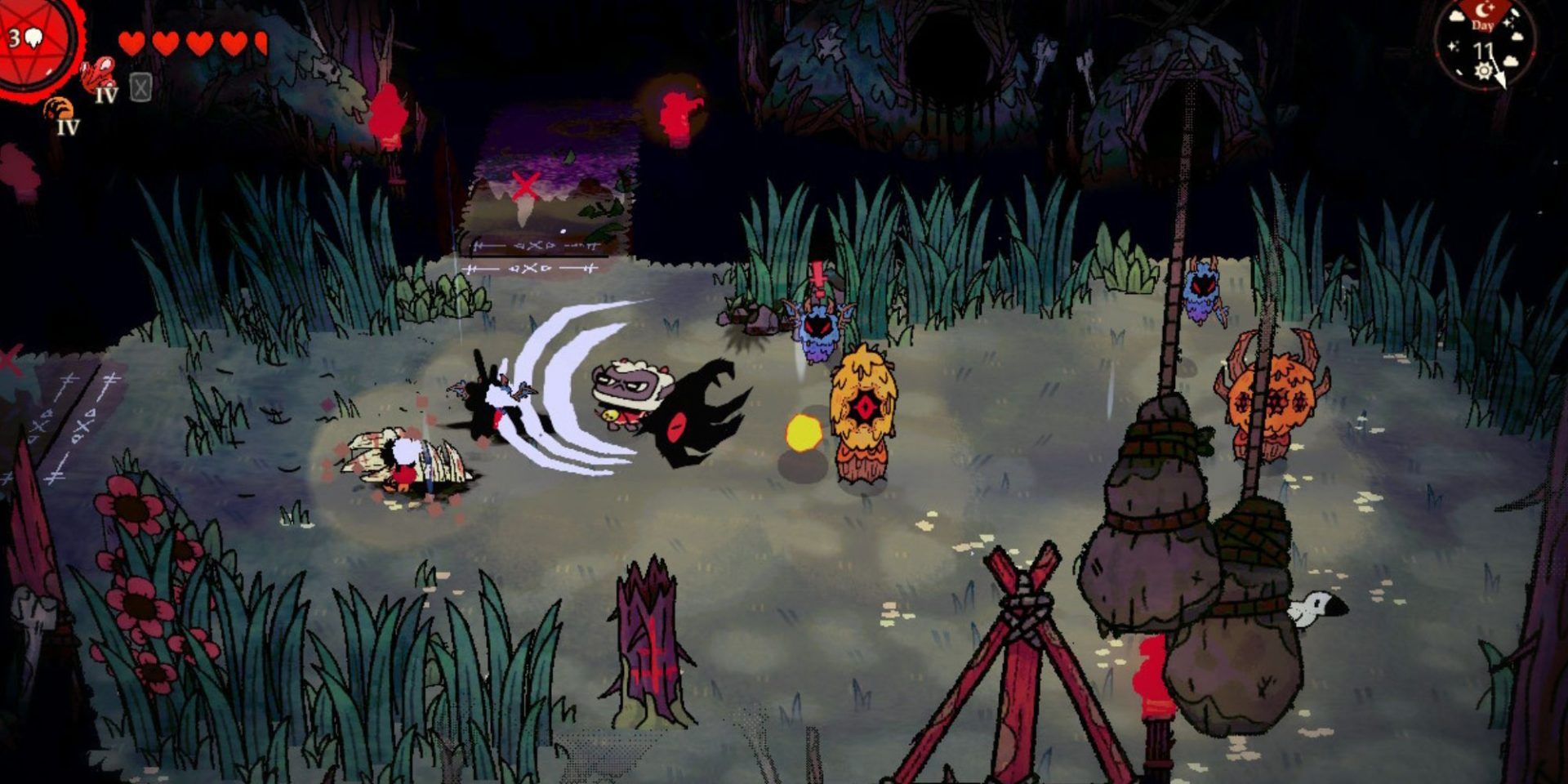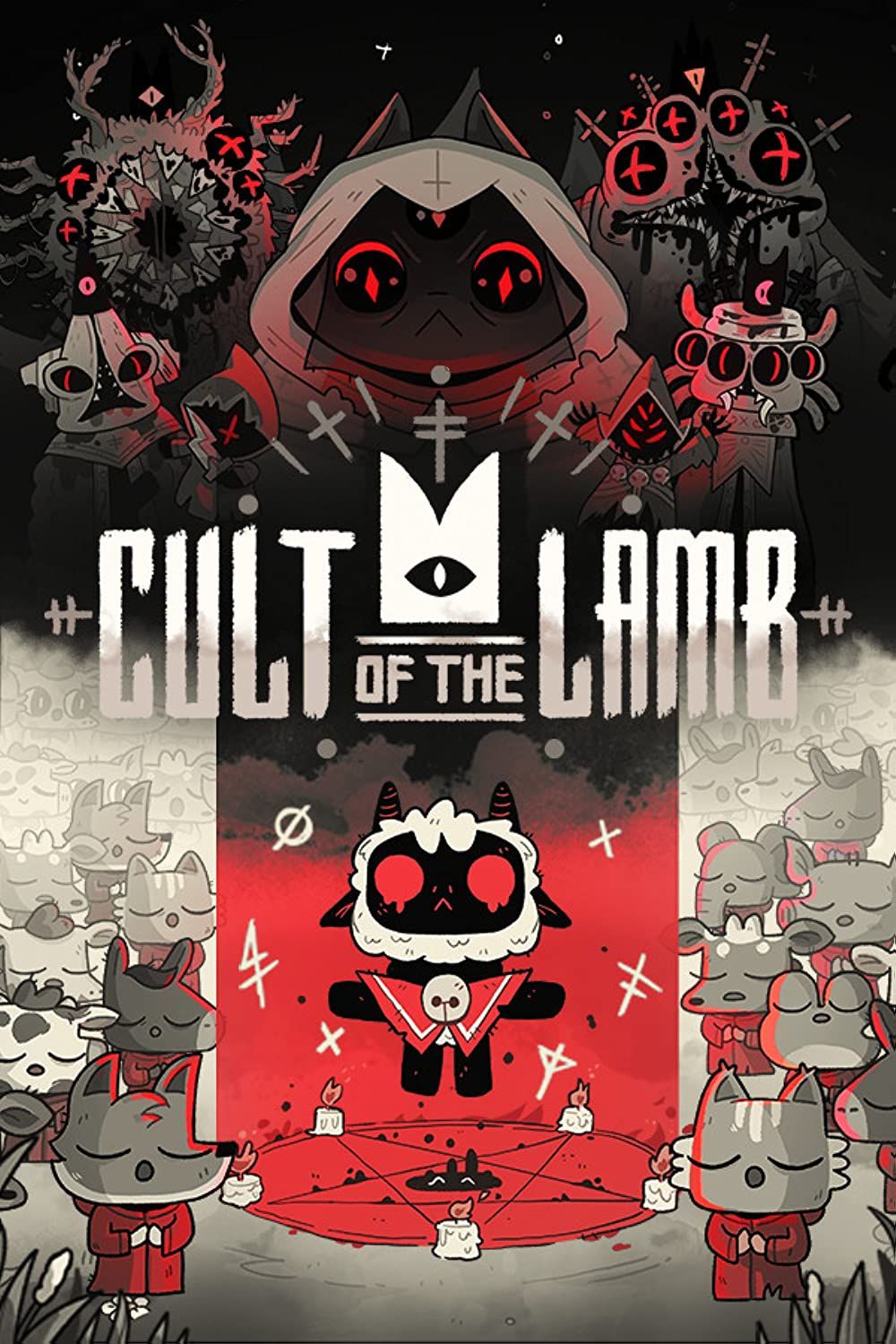|
Our Score |
6.5/10 |
|
The Good |
A variety of comical ways to manage your followers and resources |
|
The Bad |
Wasted potential and atrocious frame rates on Nintendo Switch |
|
Release Date |
August 11, 2022 |
|
Developed By |
Massive Monster |
|
Available On |
|
|
Reviewed On |
Nintendo Switch |
Cult of the Lamb gives me every option I need if I decided to turn off my morality inhibitors when playing video games. Not only do I get the chance to brainwash everyone I meet with fake sermons and sham rituals only intended for harvesting the essence of their souls, but I can also revive them after their death to make their sorry lives even more miserable, and relish in their endless torment. Now if only I didn’t have to wipe away their poop so much, my crusade would have been perfect.
As the name suggests, a big portion of this game is about experiencing the feeling of raising a cult. It happens in a Farmville-like manner where you have to manage a bunch of different resources and meters, such as hunger and faith, in order to make sure your cult is always supportive and clueless of your true schemes. This management sim aspect and having an increasing number of followers is essential to unlocking randomly generated dungeon expeditions aimed at freeing you from a dark deal with an otherworldly being.
This being, known as 'The One Who Waits', revives you after suffering from a devastating execution at the hands of an unknown cult. As the name implies, he awaits below in the depths of hell, trapped in chains at the hand of his brothers and sisters, almighty lords of the so-called Old Faith, the religion of this world. In order to be freed, he needs you to start a cult in his name, and gather enough followers to help you slay his four siblings and free him.
The process involves subjecting the followers you gather from your dungeon expeditions to many cruelties, on the level of actual international crimes. Slavery, imprisonment, cannibalism, you name it, but all of it is wrapped up in a package of cuteness and fuzziness, making the most outrageous actions you do seem hilarious and delightful. All of this is intended into turning them into mindless ‘Devotion’ generators, the main currency of this game.
“I didn’t find much incentive to revisit Cult Of The Lamb after the 13-hour normal story run”
This is where Cult of the Lamb actually feels like it’s trying to be a jack of all trades, but a master of none. You get more options as time goes by, more resources to gather, and more rituals to conduct, but they all feel catered towards curbing the very basic needs of our followers (hunger and faith), or dealing with their recurring problems like sickness, old age, or rebellion, instead of actually adding new things to do or actual activities to invest time in.
Your followers are very fickle-minded; sometimes you even have to read their minds to figure out what they are thinking or gain some hints about your next step. You will have to prepare individual meals and houses, build prisons for naughty followers, and do many other time-consuming tasks that can easily be avoided through unlocking later rituals that will streamline the process of cult gathering and make it less time-consuming.
Instead of preparing separate meals, you can just choose to hold a feast so that everyone can eat at the same time, or you can choose to influence their minds and make them satisfied with not resting for three days. These rituals require plenty of rare resources, but the concept still stands. If there are choices that help skip doing these activities or hasten their required time, then these activities weren’t fun to do in the first place.
None of these activities has an influence on the dungeon design or the available fighting choices inside. In fact, one can say you can already see everything this aspect of the game has to offer in the first hour of gameplay. There are five main types of weapons, like swords, gauntlets, hammers, and projectile-like curses, but you can’t do much with them except basic combos and dodges.
A single expedition won’t take you more than 10 minutes, but the dungeon formula changes each time and there are multiple variants of rooms to go through. Some include merchants or resources, others have followers to indoctrinate and few contain tarot cards that add a certain randomized bonus to the expedition. However, the main gameplay loop does not really change that much across all the four available zones you have to conquer.
One noticeable change is the enemy movements. They start to jump or plunge toward you, but no mind-blowing changes in the enemy variety or AI simply because you have a limited set of movements yourself. Most of the challenge depends on randomizers, which are sometimes inflicted by your enemies on your followers or the map structure, or the ones you choose yourself from inside or outside the dungeon.
The real trick to Cult of the Lamb is to decide what you should sacrifice and what will you gain from it. There are some optional randomizers that will give you an edge in battle but at a cost of something else like health or resources. The lives of your followers will also be put into question if you are in need of more resources or chances to keep going. In short, the game relies on what you are content with letting go of, instead of giving you new choices and tools to enrich your journey.
It was a very appealing challenge at first, but since the story doesn’t go much beyond its initial wacky premise, I didn’t find much incentive to revisit Cult Of The Lamb after the 13-hour normal story run. Harder difficulties affect enemy speed and damage, in addition to the capriciousness of your followers, but since your success depends more on farming resources and modifiers, the gameplay loop doesn’t offer anything tangible or refreshingly engaging.
If you fall in love with the main loop and the freedom to design and interact with your followers, then you can expect to take at least 30 fun hours out of it, but don’t go in there expecting anything innovative in either the rouge-like or management-sim departments.

